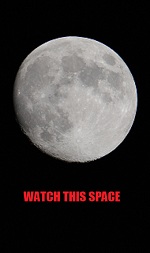
What the heck is that? I just knew you’d ask. This JPL image is a crop I chopped from the “full-res” image number N00121336 taken by the Cassini mission to Saturn, the top right catches a bit of the moon Enceladus. The thing at center left is, as you might imagine, unidentified.
Most of you have probably seen the spectacular ring photos that were recently released showing the varying mountains of material at the ring edges. Truly fascinating. I am impressed! Thoughts came flooding in via remembrance of Dr. Norman Bergrun’s work, published long ago in his book The Ringmakers of Saturn, wherein evocative and rather spooky evidence of massive objects of very likely artificial construction was presented.
Did my usual stop at Skipper’s Mars Anomaly Research site to see if there was a new post — and there was — a nice post on the Cassini investigations at the Saturnian moon Enceladus, featuring a whole bunch of high strangeness objects of which the object here in my post is but one. This one I picked for its visual brightness and cool shape, however the others are equally strange in their own right (one looks like a big lobster claw, another a giant resistor!).
Skipper thinks all these things including our guest here are life forms. It is, believe it or not, a distinct possibility. Just as up to 80% or so of our UFOs may be critters. Plasma critters.
This has been discussed in scientific circles for many, many decades… at least six of ’em… that plasma can and does behave much like a life form does… so much so there is very little doubt that plasma life forms not only exist but are as evolved and as diverse as our sort of life… as in microbes to people. Including intelligence. They are able to live in outer space.
By the way, the scientific discussions mentioned above — we’re talking David Bohm, Neils Bohr and Albert Einstein here… yes, it’s not the fringe, it’s the real deal.
Anyway, since I’ve no truck with any of those dudes, dudes who influenced my childhood, I have no problem in accepting and imagining the world of these creatures… and no problem with Skipper’s analysis… especially if you look at the sequences, the things do move and change shape, so hey… not much of a stretch. They sure are big, though! Jeez!
I am impressed. Very much so. There are tons of these guys around out there at Saturn… and different kinds, too! Very, very exciting. To me at least.
Now… I do have two problems with the Cassini mission, one pointed out by Skipper that I share, as will you, I bet.
Firstly, Cassini has several occasions flown way close to Enceladus, once in 2008 approaching within 16 miles of the surface! Sixteen miles! What could be wrong with that, you ask? Nothing!
The problem is that no photos have been publicly released that are any closer than 88,020 kilometers. Not one. And even those are only 512 pixels small. It twists my gut. In my opinion, that is simply criminal. In a literal sense. Our tax dollars paid for all this… and we want to see! Man, that ticks me off. Really, really, really so.
Secondly, I have a problem with the image below. Haven’t checked the others. This is the original “hi-res” (Ha!) shot with our selected guest critter in it, reduced from the 512 pixel width to the 497 that this blog theme displays.
My problem is the stars. Assuming of course that they are stars. Because if they are… then how in heck are they showing through the moon? Eh? I mean really, don’t you think that that is mighty odd? The moon seems to vanish into the ether just past halfway up; and below that doesn’t look too solid, either… I really want to know just what is up with that… that’s just weird. That’s just wrong.
I’m actually more concerned with this aspect than with the critters!
Even if these stars aren’t stars at all but are really just more critters, that’s cool, but what of the vanishing moon? This is driving me right up the wall! The cameras sure took some sporty pics of those rings, so, again… what is going on here?

And, now, something I just now stumbled across… here’s my resulting image just below.
I opened up the above shot from JPL/NASA and gave it 4 more f-stops of exposure (which is all I can give it in one shot)… and just lookee what we can see now!
A little bit more of Enceladus… which served as some small relief for the aforementioned mind-warping conundrum (is it really that dark out there? Wow!) but certainly not relief in full by any stretch of the imagination.
Lots more “stars” which I’m now thinking are just more critters… The “stars” all exhibit awful jpeg weirdies by the way which one can see just by enlarging the original, which causes our Skipper to go on about tampering and such in his report… anyway…
But look! There are at least four more of our lovely curved-V critters! Woot! They just aren’t up to glowing like our invited guest does. Wow!
Since they all have the same shape… are these camera artifacts? From the conditions out there? Reflections of the first one? Could be certainly, but it doesn’t seem likely… there are different families of critters in the day’s sequence… all the dudes in the Skipper’s report are from the same day… so… wow.
Finally, I would just like to note that it’s been more and more apparent to me over the years, more so lately simply due to more thought being devoted to it… that the farther out we go… the more the strangeness factor applies… and applies exponentially! Just weird!

!!!







































 Adam Gorightly In The Land of Enchantment
Adam Gorightly In The Land of Enchantment





 What’s All This, Then? is copyright © 2009 to the present by Ignatius F Makarevich - All rights reserved worldwide.
What’s All This, Then? is copyright © 2009 to the present by Ignatius F Makarevich - All rights reserved worldwide.


